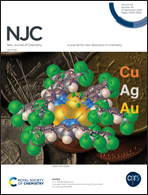Electronic structures, and optical and photocatalytic properties of the BP–BSe van der Waals heterostructures
Abstract
The combination of two-dimensional materials in the form of van der Waals (vdW) heterostructures has been shown to be an effective method for designing electronic and optoelectronic equipment. In this work, we investigated the electronic and optical properties, and photocatalytic performance of the BP–BSe vdW heterostructure using first principles calculations. We found that the BP–BSe vdW heterostructure is energetically and thermally stable at room temperature. The BP–BSe vdW heterostructure shows the type-II band alignment with a direct band gap nature. Additionally, charges are driven from the BSe to BP monolayers in the BP–BSe heterostructure. Bader charge analysis showed that about 0.23 electrons are transferred from BSe to the BP layer. Furthermore, the absorption coefficients are also calculated to understand their optical behavior. Our results show that the lowest energy transition is controlled by excitons. The photocatalytic performance of the BP–BSe vdW heterostructure shows that such a heterostructure is suitable for water splitting at pH = 0.



 Please wait while we load your content...
Please wait while we load your content...